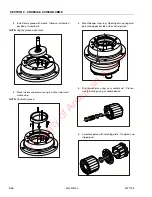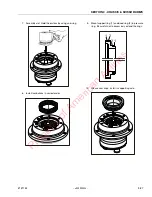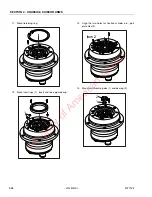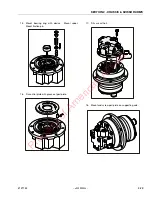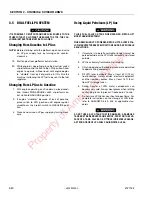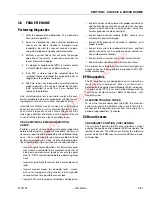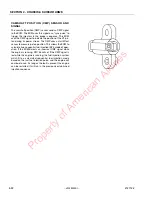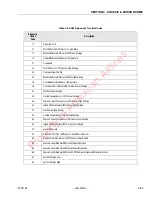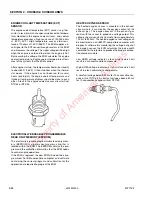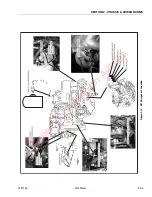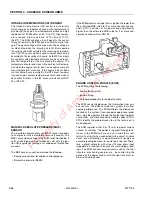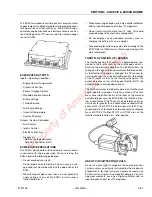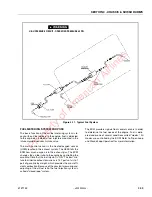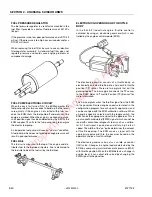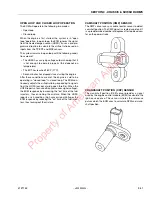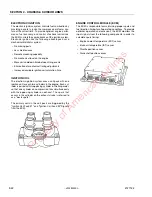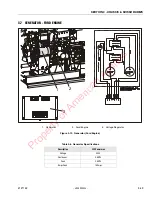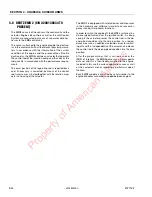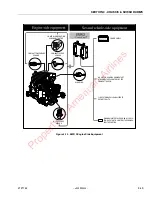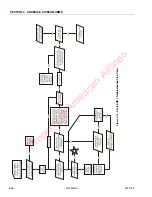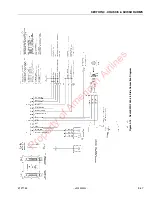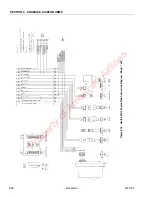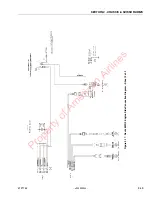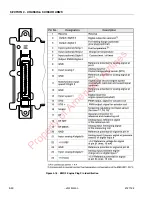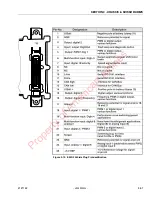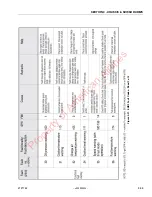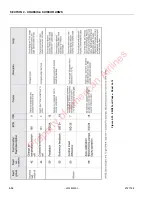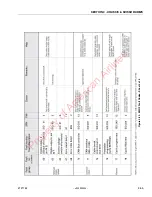
SECTION 3 - CHASSIS & SCISSOR ARMS
3-40
– JLG Sizzor –
3121133
FUEL PRESSURE REGULATOR
The fuel pressure regulator is a relief valve mounted in the
fuel filter. It provides a constant fuel pressure of 441 kPa
(64 psi).
If the pressure is too low, poor performance and a DTC 32
will set. If the pressure is too high, excessive odor and/or a
DTC 42 will result.
When replacing
the fuel filter, be sure to use an identical
filter/regulator assembly. A standard fuel filter does not
regulate pressure and could cause engine problems or
component damage.
FUEL PUMP ELECTRICAL CIRCUIT
When the key is first turned "ON," the ECM energizes the
fuel pump relay for two seconds to build up the fuel pres-
sure quickly. If the engine is not started within two sec-
onds, the ECM shuts the fuel pump off and waits until the
engine is cranked. When the engine is cranked and crank-
shaft position signal has been detected by the SECM, the
ECM supplies 12 volts to the fuel pump relay to energize
the electric fuel pump.
An inoperative fuel pump will cause a "no-start" condition.
A fuel pump which does not provide enough pressure will
result in poor performance.
FUEL RAIL
The fuel rail is mounted to the top of the engine and dis-
tributes fuel to the individual injectors. Fuel is delivered to
the fuel inlet tube of the fuel rail by the fuel lines.
ELECTRONIC GOVERNOR AND THROTTLE
BODY
In the 2.5L EFI industrial engine, throttle control is
achieved by using an electronic governor which is con-
trolled by the engine control module (ECM).
The electronic governor consists of a throttle body, an
electronically-actuated throttle plate, and a built-in throttle
position (TP) sensor. There are two pigtails that exit the
governor body. The 3-wire pigtail connects the TP sensor
to the ECM. Refer to "Throttle Position (TP) Sensor" for
more information.
The 2-wire pigtail carries the throttle signal from the ECM
to the governor. Desired engine speeds are stored in the
configuration program for each specific application, and
can be changed with the ECM calibration software. When
an engine speed is selected with the toggle switch, the
ECM sends the appropriate signal to the governor. This is
a pulse-width modulated (PWM) signal which cannot be
read with conventional diagnostic tools such as a voltme-
ter. A 12-volt signal is pulsed on and off at a high rate of
speed. The width of the "on" pulse determines the amount
of throttle opening. The ECM sends a signal with the
appropriate pulse width to the governor based on the
operator's choice of switch settings.
The electronic governor also acts as an idle air control
(IAC) valve. Changes in engine load are detected by the
ECM by comparing manifold absolute pressure (MAP)
with throttle position. When the ECM detects a change in
engine load, it can adjust idle speed by changing the
PWM signal to the governor.
Property of American Airlines

